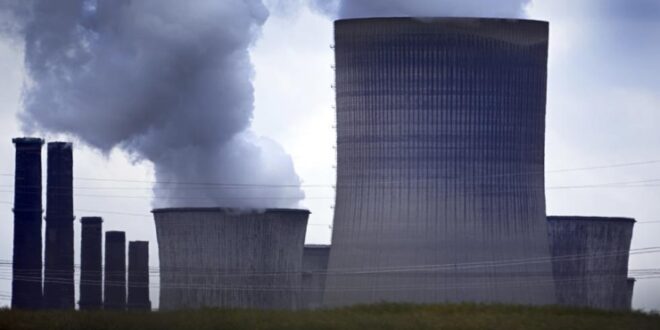The EU’s carbon emissions could decline again from 2023 amid continued growth in renewable energy generation capacity, Goldman Sachs has said.
The bloc’s emissions rose 9 per cent from 2020 to 2022, driven by a surge in transport demand after the Covid-19, and significant gas-to-coal switching in the power generation sector, the US investment bank said.
Russia’s invasion of Ukraine last year pushed natural gas prices to record levels, incentivising power stations to increase their use of coal.
Goldman Sachs expects increasing renewable generation capacity – combined with a “more sustainable” switch away from coal and back into gas from 2025 – to reduce EU emissions by another 16 per cent by 2030.
“The large impact of coal-to-gas substitution on carbon emissions in both Europe and the US over the years, whether driven by price or by coal capacity retirements, underscores the important role natural gas plays in the decarbonisation process, alongside the growth in renewable generation capacity,” Goldman Sachs analysts said.
“This may prove particularly impactful in reducing emissions in economies struggling to grow their own renewable generation capacity, especially from 2025, when we expect the next wave of global LNG [liquefied natural gas] supply growth to significantly increase availability,” the analysts said.
Rising LNG imports from the US and Gulf countries have helped Europe to replace Russian supplies.
Europe made it through the last winter without an energy crisis as it faced less competition for LNG cargo from Asia, where economic growth was dampened by strict Covid-19 measures and travel restrictions.
Dutch Title Transfer Facility gas futures, the benchmark European contract, was last trading at about €32 ($34.75) per megawatt hour on Friday after falling by about 67 per cent since the start of 2023.
Although European gas prices have moved below coal during the summer, the fuel substitution will likely reverse again going into next winter and 2024, Goldman Sachs said.
“With Russian gas supply still severely restricted, we expect EU gas balances to tighten sequentially from here driven by an increase in gas demand, as well as by lower LNG supply availability,” the bank said.
China’s LNG imports plunged by 16 million tonnes in 2022 compared with 2021, according to the General Administration of Customs.
China, the world’s second-largest economy and top crude importer, is considering stimulus measures to revive its economy after posting weaker retail sales and manufacturing output last month, while registering a slowdown in the property sector.
Even as higher gas prices promote the use of coal, the “downward path” for EU carbon emissions is still intact, Goldman Sachs said.
The REPowerEU Plan seeks to increase the share of renewables in the EU’s energy mix to 45 per cent by 2030. This is up from the bloc’s current target of 40 per cent.
“This goal may appear aggressive considering the historical pace of renewable share growth in the region,” Goldman Sachs said.
“But, we believe it’s achievable, given the accelerating pace of the EU’s renewable capacity additions observed more recently and the growing policy support in the region.”
A record 295 gigawatts of renewable energy capacity was added around the world in 2022, up by about 10 per cent from the year before, according to the International Renewable Energy Agency (Irena).
Eighty-three per cent of all new capacity last year was produced by renewables, the Abu Dhabi-based agency said in its Renewable Capacity Statistics 2023 report released in March.

 Iran Energy News Oil, Gas, Petrochemical and Energy Field Specialized Channel
Iran Energy News Oil, Gas, Petrochemical and Energy Field Specialized Channel



